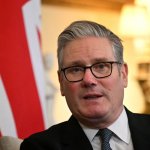Ukrainian president Volodymyr Zelensky has welcomed an international proposal for a demilitarised zone around Europe’s biggest nuclear plant, currently occupied by Russia.
In a much-anticipated September 6 update, the UN’s International Atomic Energy Agency (IAEA) recommended this safety and security zone be put around the Zaporizhzhia plant in southeastern Ukraine to avoid a nuclear disaster.
“What is urgently needed, now, today, is that we agree on establishing a protection … a shield, a bubble around the perimeter of the facility,” IAEA director general Rafael Grossi told CNN. He urged all parties to cooperate in the protection of the facility and establishment of the zone, saying the IAEA would reach out to all sides “very very soon, with very concrete steps for your consideration”.
This would be the first time an international body has overseen an endangered nuclear plant during a war. In previous military actions involving nuclear power plants, they were destroyed outright by aerial bombing – but mostly while under construction, before they were operational, or before building up inventories of hazardous spent nuclear fuel in vulnerable cooling ponds.
Previously, the IAEA has only been able to gain access to such sites afterwards, “to pick up the pieces”. For the IAEA to intervene directly in the delivery of safety and security would be unprecedented, and legally and practically very challenging.
There has been no agreement yet from Russia to these proposals.
The IAEA has also asked for:
1) The return of full control over plant security to Ukrainian personnel;
2) The removal of Russian military vehicles from safety- and security-critical areas;
3) The removal of Russian nuclear experts and military personnel from control over nuclear operations at Zaporizhzhia, where they compromise established chains of command in safety/security incident management;
4) The urgent repair and reconnection of off-site electrical supplies, which are vital for the plant’s safety systems to have sufficient backup power sources; and
5) The re-establishment of supply chains for necessary equipment and materials to the plant, and of reliable communications with key bodies in Ukraine and internationally.
This report follows a long-awaited visit by IAEA experts, who began inspecting the Zaporizhzhia nuclear power plant on September 2. The plant has been occupied by Russian forces since March, with Ukrainian staff working under stressful conditions to prevent a nuclear disaster. Since August, the plant has been shelled many times, damaging critical safety equipment and services. Both Russia and Ukraine blame each another for these attacks.
IAEA member states, including Russia and Ukraine, are responsible for their own nuclear safety and security. They have a right to use nuclear technology for peaceful purposes, even in times of war.
What is the IAEA?
Based in Vienna, the IAEA is a UN body that brings together nuclear experts and diplomats, and is often called the world’s “nuclear watchdog”. It was set up in the 1950s as a result of international nuclear fears.
Read more:
Shelling of Europe’s biggest nuclear power plant exposes multiple risks – a nuclear expert tells us what they are
The IAEA upholds the deal that states, including Russia and Ukraine, made in the international Treaty on the Non-proliferation of Nuclear Weapons, under which they agree to not develop nuclear weapons and, in return, are eligible to receive help on the peaceful uses of nuclear technology.
To do so, the IAEA implements “safeguards” – inspections and technical measures to verify that nuclear materials are not being diverted from peaceful applications into weapons programmes. As one of the five nuclear weapons states under the treaty, Russia is not obliged to submit to safeguards, but does so voluntarily for its civil nuclear facilities.
The IAEA also brings together experts to address scientific and political issues in nuclear power, such as nuclear safety and security.
Normally, the agency conducts inspections at nuclear facilities globally on a regular, usually annual, basis. It also receives data regularly from these nuclear facilities, ensuring that it remains informed even when not on site. However, the war in Ukraine has disrupted this process greatly, with monitoring systems down and the information flow disrupted. In this information vacuum, both sides have made numerous claims about the Zaporizhzhia plant and one another, while documented evidence has been scarce.
With IAEA experts now permanently on site, the agency will be able to receive direct updates from its own personnel. They will be able to report on conditions for Ukrainian staff, as well as the status of nuclear safety and security equipment and military actions.
The best possible course of action for nuclear safety and security would be a halt to hostilities and a controlled but rapid withdrawal of occupying forces from around the Zaporizhzhia facility. However, the statement of the Russian envoy to the UN Security Council, Vasily Nebenzya, on September 6 doesn’t suggest the Kremlin is about to agree to the IAEA plan.
Ross Peel is affiliated with the Centre for Science and Security Studies, a multi-disciplinary research and teaching group within the Department of War Studies at King's College London. Through King's, he is also a member of the World Nuclear Association.










